If you have questions about the correct way to use a tenon or mortise with a chuck, perhaps this article will help.
Restricting Chuck Expansion
When using the chuck, the expansion of the chuck should be minimized. The goal, maximize the contact of the chuck on the tenon. The jaws should make full contact around the tenon. There shouldn’t be jaw points or indentations left on the tenon. If points or indentations are left, surface hold is limited and the effectivity of the chuck will be poor.
The following would be CORRECT:
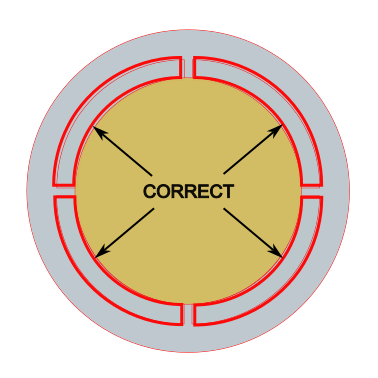
The following would be INCORRECT:
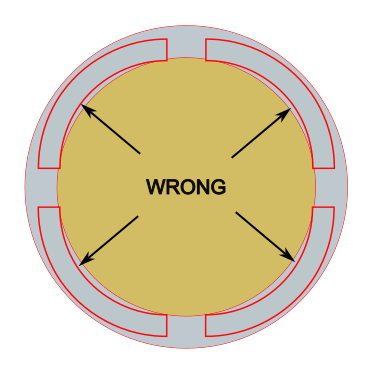
Note: When using a mortise, the same would be incorrect. The mortise should NOT be sized to create large gaps on the inside of the mortise as the chuck expands (causing only the center of each jaw to contact the mortise).
Using a Tenon in a Chuck
When using a tenon, you do NOT want the tenon base to fit firmly against the base of the chuck jaws, you want a gap between the bottom of the tenon and the chuck. You do want a tenon ledge to fit firmly against the top of the chuck jaws.
The following would be CORRECT:
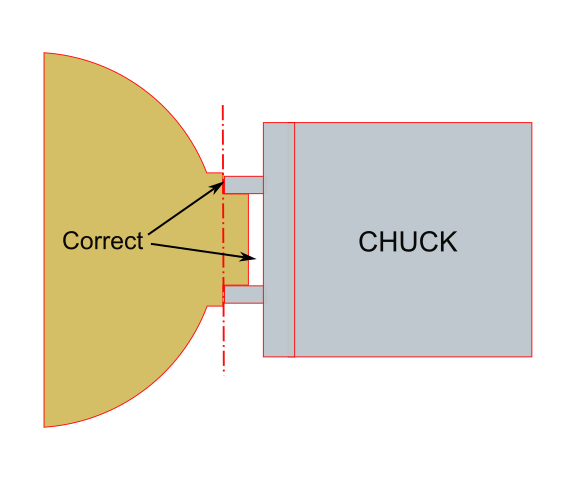
You do not want a gap between the base of the bowl, or have the tenon base touching the chuck. Additionally, the top of the chuck jaws should be firmly against the base of the bowl (a smooth ledge should exist for seating the top of the chuck jaws).
The following would be INCORRECT:

Using a Mortise in a Chuck
When using a mortise, you want the recess to be deeper than the outer gap ridge created for the insertion of the chuck jaws, and there may be a gap between the mortise ridge and the chuck jaw base.
The following would be CORRECT:
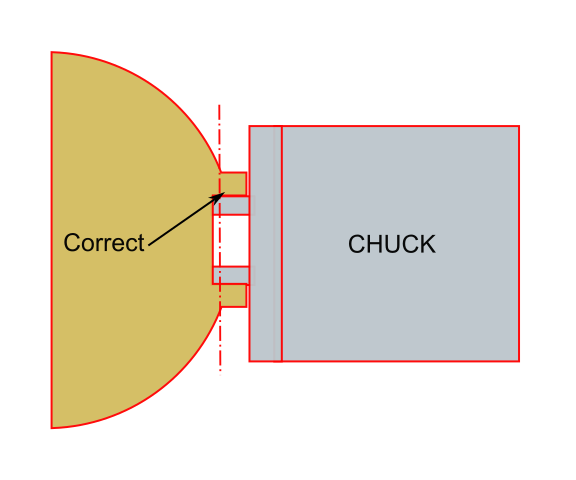
When using a mortise, you want the recess to be deeper than the outer base ridge created for the insertion of the chuck jaws. If not deeper, it is highly probable that the ridge will crack and break under the expanding force of the chuck.
The following would be INCORRECT:
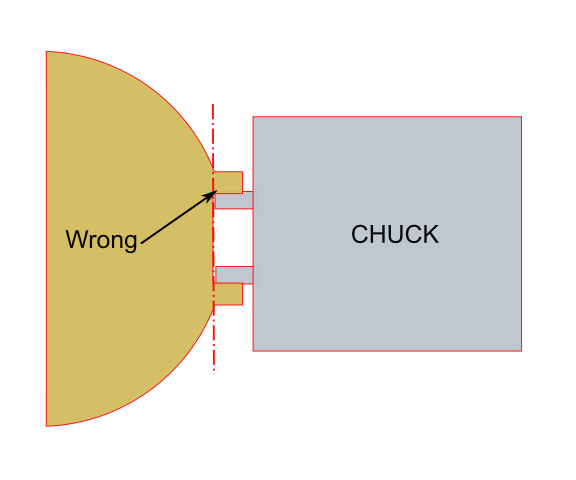

Simple, clear understandable. Perfect instructions without all the waffle. Thanks
Glad this is clear and helpful. Have a great day.